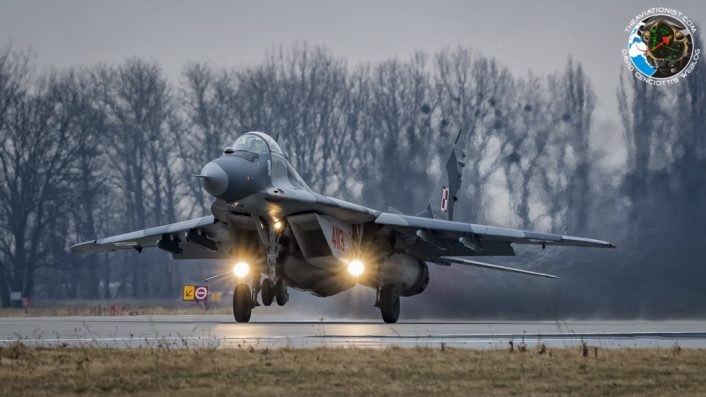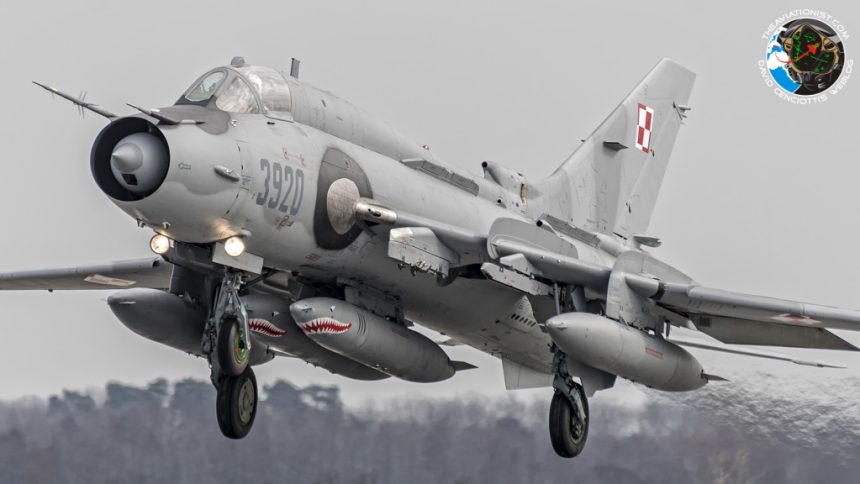60 new aircraft to replace the ageing fleet of Polish MiG-29 and Su-22 jets as part of the Harpia program.
In January it has become clear as to which designs would be pitched within the framework of the Polish next-gen fighter procurement, dubbed Harpia (Harpy Eagle). Polska Zbrojna suggests that the acquisition plans envisage procurement of at least 60 airframes, to replace the MiG-29 and Su-22 fighter aircraft at 1:1 ratio. The MoD decided to accelerate the fighter acquisition in November last year.
The tender announcement date is unknown as of yet, however we now know which contenders are going to be assessed within the scope of the program. All of the western industry leaders have placed their offers within the procurement: Lockheed Martin (F-35 and F-16V), Boeing (F-15 and F/A-18), Saab (Gripen) and Leonardo (Eurofighter Typhoon). These designs have been selected during a market analysis taking place between 2017 and 2018. Notably, solely the F-35 belongs to the 5th generation of the fighter designs, while the remaining aircraft are perceived as belonging to the 4+/4++ category.
Money seems to be one of the primary factors that could be decisive for selection of the MiG-29 and Su-22 replacement. The Lockheed Martin’s 5-gen jet is becoming cheaper (single unit cost lower than USD 90 million – however, this pricetag is valid solely for the program’s participants). Juliusz Sabak, journalist working for Defence24 notes that in case of Poland the price may be reminiscent of the one proposed for Belgium – USD 130 million per a single example.
In case of the Fitters, replacement is somewhat a burning issue, mainly due to the fact that the design in question has limited capacity within the scope of operating in a net-centric environment. The MiG-29, on the other hand, has undergone some significant upgrades.

However, as Polska Zbrojna reports, the problematic nature in case of the Fulcrum has its roots in the availability of spares. The main problem is caused by the series 2 RD-33 engines, that are no longer manufactured. The series 3 of that propulsion unit differs significantly from its predecessor, as Polska Zbrojna suggests, making replacement impossible.
The availability of spares is not a problem that remains exclusive for Poland who is one of three NATO nations that operate the Fulcrum, alongside Bulgaria and Slovakia. Both aforesaid states look forward to replace the Soviet design with the Lockheed Martin’s F-16 Block 70. The lack of (new or overhauled) RD-33 engines is painful for any nation that operates the older variety of the Fulcrum.
As iconic as the jet may seem, its era is slowly fading away. This is also due to the fact that the airframes’ lifetime is limited. The Polish Air Force has been operating the MiG-29 for 3 decades now and this means that replacement, even though difficult, is reasonable now.
It is also reasonable to claim that the only prospective aircraft operated by the Polish Air Force (prospective, meaning that it offers some kind of potential within the framework of plausible upgrades) is the F-16 platform, coming in the Block 52+ variant.
One of the matters that is frequently overlooked when examining the potential Polish fighter procurement, and we need to reiterate and stress this again, is the Wisła air defense program that is also currently pursued by the Polish MoD. The cost framework associated with that procurement imposes a major limitation on the remaining acquisition and modernization programs run by the Polish military, Harpia included. Thus, we cannot really know to what extent, and certainly – when – the Harpia procurement would become reality.









